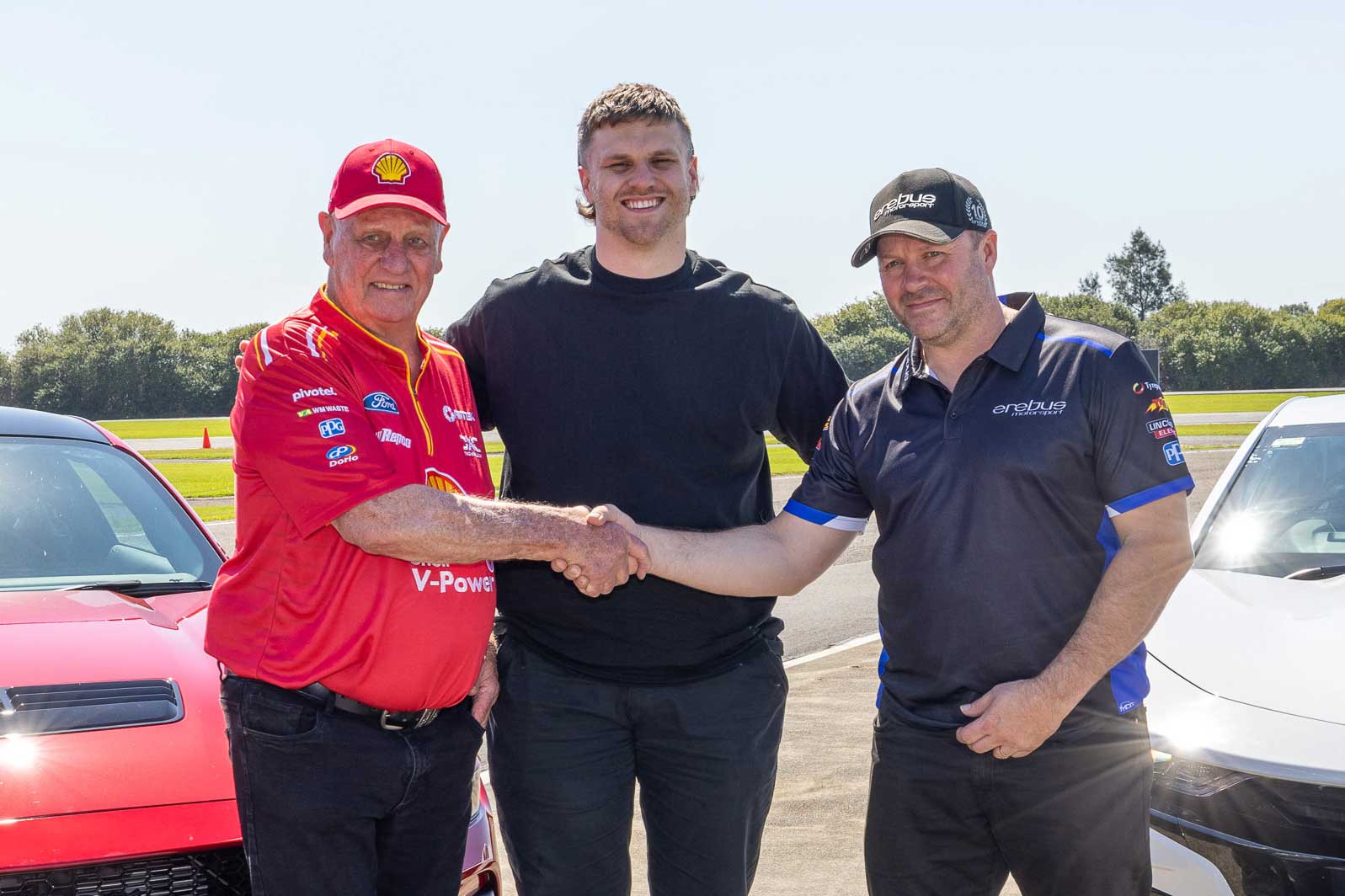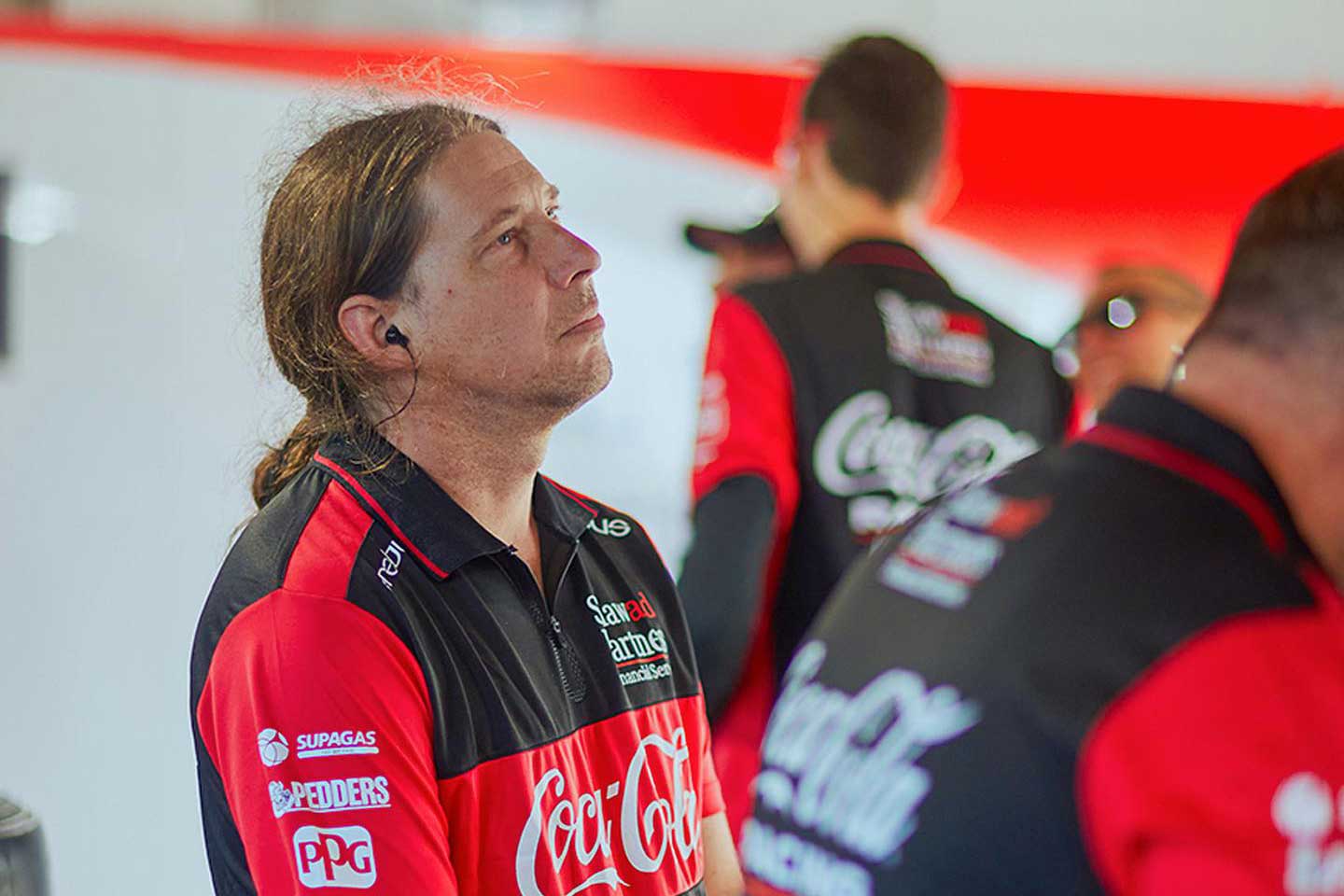

Speedcafe breaks down the key talking points from this unexpected alliance between a Ford powerhouse and Chevrolet’s reigning champions.
What’s the news?
Dick Johnson Racing has struck a deal with Erebus Motorsport to supply the Shell V-Power Racing Team with Gen3 chassis ahead of the 2025 season.
DJR is expected to have two of the new chassis by the start of 2025. The first is believed to be almost finished, ready to be painted and built-up as a complete car.
So is Erebus building Mustangs?
Yes and no. The basic Gen3 chassis is a control design common to both the Ford Mustang and Chevrolet Camaro.
Each chassis essentially starts life as a kit of laser cut and notched chrome-moly tubes supplied by Pace Innovations to accredited builders.
The kit includes some manufacturer-specific sheet metal and mounts, but the bulk of the Ford components – the bodywork and engine – will be added during the car build at DJR.
Where does DJR currently get its chassis?
DJR is one of many teams to currently have its chassis built by Gold Coast-based Pace Innovations.
Pace has supplied DJR since the start of the Car of the Future era in 2013, building all its recent championship and Bathurst-winning chassis.
Before that Pace was also involved in the Project Blueprint FG Falcon chassis builds that DJR bought as complete cars from Triple Eight.
Why change?
While this is for the team to explain, clearly DJR believes there is a performance advantage in switching to the Erebus chassis.
Erebus boss Barry Ryan has been vocal about his belief that the team’s chassis are superior, even though this is hard to actually prove.
It’s notable that DJR’s move will coincide with the arrival of Brodie Kostecki and engineer George Commins, who have enjoyed great success with Erebus’ Gen3 cars.

Aren’t all chassis meant to be the same?
The chassis are built from a supplied kit of tubing to a control specification. Even welding type is mandated, and the chassis are inspected by Supercars at stages during the build.
However, a chassis is more complex to manufacture than, for example, a wheel nut, and builders have their own jig mechanisms on which the chassis are constructed.
Attention to detail in tolerances, as well as weld order and quality, could theoretically make a difference on track.
As the chassis are handmade (rather than robotically welded), even two built on the same jig are unlikely to be absolutely identical.
What’s in it for Erebus?
Erebus is yet to speak publicly on the deal. However, it’s not unusual for Supercars teams to raise revenue by selling what is – real or otherwise – perceived as a competitive advantage.
That includes selling whole chassis or cars. Triple Eight currently builds chassis for PremiAir Racing (supplied as complete cars) and Team 18 (bare chassis), as well as its own Red Bull Ampol team.
Erebus’ success last year is understood to have triggered multiple inquiries from other teams about buying their chassis.
The team has clearly now taken a decision to monetise that winning reputation. There could yet be more customers in 2025.
So who is James White?

James White is Erebus’ fabricator who builds the team’s chassis from a remote workshop in Mount Gambier, South Australia. White has built all of Erebus’ cars since 2017.
While having a fabrication department located 400km from the main race team in Melbourne is unusual, White’s association with Erebus boss Barry Ryan stretches back 20 years.
They worked together at Perkins Engineering and its successor Kelly Racing before White branched out on his own in 2014, initially in Melbourne before moving to SA for lifestyle reasons.
White is an employee of Erebus and is also part of its travelling race crew. The arrangement allows White to focus on applying his craft while Erebus handles the business elements.
Who else builds Gen3 chassis?
Erebus Motorsport, Triple Eight, Walkinshaw Andretti United and Pace Innovations are the only accredited builders of Gen3 chassis.
There have been 46 Gen3 chassis built to date, including the two prototypes and a couple of spares that are yet to hit the track.
Pace has built over half of those chassis (24), compared to 14 from Triple Eight and four each from Erebus and WAU.
What’s the results tally?
While race results are influenced by many other factors, it’s worth a quick glance to see how the wins have been split across the 50 Gen3 Supercars races to date.
Triple Eight chassis have won 20 races (19 through Red Bull Ampol Racing and one to Team 18), compared to 15 for Pace (spread across Tickford Racing, Grove Racing, Brad Jones Racing and Matt Stone Racing).
The two single-team chassis builders Erebus and WAU have won 12 and three races respectively.

Why isn’t there a single chassis supplier?
Supercars’ Gen3 rules consist of various parts and components that are either able to be manufactured to a control specification or must be sourced from a control supplier.
The original Gen3 plan is believed to have included having Pace as the control supplier for chassis, before a push to enable teams to build their own from Pace-supplied kits won out.
Powerhouse teams with manufacturing capability tend to want to control their own destiny, while it’s incumbent on the series to control costs and ensure a level playing field where possible.



















Discussion about this post